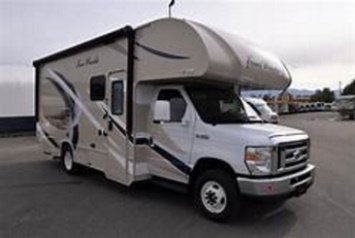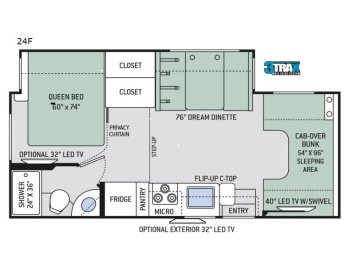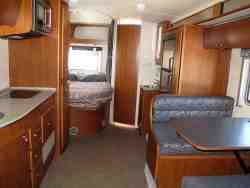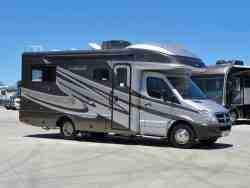[?]Subscribe To This Site
Motorhome Towing Hitches
- The first is an An A-Frame... that can either be a rigid or a self-aligning design.
- These solid A-Frames and Self-Aligning tow hitches are strong and heavy. They can weigh up to 25 lbs.
- The self-aligning design fits a larger range of mounting brackets than the solid designed A-Frame tow hitch.
- Storage could be a problem when not in use, and hitching is much more easily accomplished with a helper to guide.
- These solid A-Frames and Self-Aligning tow hitches are strong and heavy. They can weigh up to 25 lbs.
- The second is the Folding Tow Hitch. We have two choices available... dinghy-mounted and coach-mounted. Either mount can be self-aligning.
Advantages OF A Dinghy Mount:- Dinghy mounted tow hitches can easily be folded and stored on the dinghy's front bumper area.
- They usually have a quick release system allowing easy detachment.
- They may be self-aligning and a one-person operation.
- As a general rule, dinghy mount towing hitches are less expensive to purchase.
- This is not considered the best option due to potential damage inflicted on the vehicle if the dinghy's front bumper is impacted.
- A locking system is in place, but theft could be a problem.
- Excessive wear could develop on the front suspension due to an additional weight factor.
- This tow hitch can be considered aesthetically displeasing.
- This type of mount uses a swivel joint in place of the traditional ball coupler.
- This allows the tow hitch to be used without a drop towing hitch... therefore, we will not drag it or bottom out when going up an incline.
- This allows the tow hitch to be used without a drop towing hitch... therefore, we will not drag it or bottom out when going up an incline.
- It is easily tucked up out of the way on the back of the motorhome.
- It leaves the dinghy free from the tow hitch and unencumbered.
- There is less chance of collision damage if left mounted on the motorhome.
- A locking system is in place, but theft could be a problem.
- Cost of unit can be a bit pricey.
- Depending on the drop angle,
unsafe breakaway issues could develop.
- Dinghy mounted tow hitches can easily be folded and stored on the dinghy's front bumper area.
Using a tow hitch on our Class C Motorhome opens up a new a world of options. We can pull a dinghy, a boat, or maybe utilize various trailer hitch cargo carriers if that suits our needs.

Custom Search
Most people, however, use these hitches for the purposes of dinghy towing. So let's discuss the mechanics of a motorhome's connection to a dinghy that is being flat pulled.
There is a lot to consider here. Let's go through this equipment starting with the motorhome and working back toward the dinghy's requirements. This will include the use of a motorhome hitch, drop down receivers, tow-bars, and base-plates... along with the need to choose from the many auxiliary RV braking systems that have appeared on the market in the last couple of years.
As common sense dictates... all of the assorted towing paraphernalia must be in good working order and rated for the weight that we intend to pull. In fact, it is best to have equipment designed for our specific application.
As I stated above, most vehicles will require a hitch that has been designed just for that vehicle. For an example, if we were to go to Reese Hitches and buy a hitch receiver for a 1999 Ford Explorer, we would not be able to fit this on a 1999 Chevy Tahoe. It just won't fit.
I should also point out here that after we find hitches that will physically match up to our rigs, this is only one part the qualifying criteria. We must also be aware of the different load capacity and hitch classes that will allow us to pull a dinghy safely.
Motorhome hitch receivers, however, are a bit different. They are designed to adjust to fit a variety of motorhome chassis. This is due to the fact that on most of our Class C Motorhomes, the frame is essentially the same... however, an allowance does need to be made for the variance in width.
This variance in width, and in some cases height, mandates the use of an adjustable towing hitch along with a drop down receiver. This combination has become the most logical and economical solution for this market.
After the installation of our choice of motorhome towing hitches, things get a little bit more complicated... or technical. Let's see if we can sort this out a bit.
An "A" Frame And The Folding Tow Hitch
Tow Hitches:
Base-plates:
Base-plates are perhaps the most critical variable in this link. While tow hitches and, obviously, hitch receivers are intended for mass fitment, different brands, models, and years of dinghy vehicles require different base-plates and installation procedures so proper selection and installation are essential.
- Base-plate installation requires very specific procedures that vary according to our choice of dinghy.
- Unless a person is very brave and is handy with tools, I would recommend having the base-plates along with the brake light modifications done professionally.
- Depending on the vehicle, bumper coverings (fascia) may have to be temporarily removed and some minor drilling may be required. The bumper cover and grill may also need some trimming along with the shock absorption pads. This is not for the faint of heart.
- Base-plate installation may be even more intricate. As an example, the vehicle's air dam may need to be trimmed... or the factory-installed belly pan my require some trimming--even permanent removal.
- Unless a person is very brave and is handy with tools, I would recommend having the base-plates along with the brake light modifications done professionally.
The good news is, once completed, the base-plates do a good job of blending into the exterior lines of the dingy vehicle. By doing as much homework as possible surprises at the time of installation will be kept to a minimum.
Finishing Up:
The riding height of most Class C Motorhomes will rarely match the lower riding height of a towed dinghy. Therefore, unless we are using a motorhome mounted tow hitch that adjusts to the height differential between our rigs, some type of compensation will be necessary.
This is accomplished through the use of a variety of adjustable drop towing hitches that are available to even things up.
This should be the last piece of the puzzle. It will be necessary to measure the height difference between the towing hitch receiver and the tow-bar that is attached to and extended out level from the dingy base-plate.
It is a simple process of compensating for this height differential between Class C Motorhome and the dinghy being pulled. The goal is to have a tow hitch that will remain level when pulling.
Remember, too, that all 50 states require properly rated safety chains or cables to keep the dinghy from separating from the motorhome if the tow hitch or ball fails.
Safety chains or cables should be connected securely to the dinghy, crossed under the tow hitch, and then secured to the hitch receiver. They should be long enough to allow full turning without binding, but not drag when slack.
One last thing to consider is that some, but not all of the states will require some type of breaking system to help slow down the dinghy. However, not all RV braking systems are the same. There are many manufacturers out there who think they have the best solution. Essentially, it is up to us to figure out what works best for us.
Return To Top Of Page
Leave Towing Hitches And Return To Motorhome Dinghy Towing
Leave Towing Hitches And Return To The Class C Motorhome:
How To Achieve The Maximum RV Lifestyle
Your Stories
Onan AC Generator Wouldn't Start
1995 Tioga Montara Had a Leak - Ouch!
A Simple Way To Put An Elecrtrical Thermostat On A Small Space Heater In A Truck Camper!
A Great Destinaton, With An Unexpected Outcome!

2018 Thor 21F Four Winds Class C Motorhome

2018 Thor 21F Four Winds Class C Motorhome
2010 Fleetwood Pulse 24D
Class C Motorhome

2010 Fleetwood Pulse 24D
Class C Motorhome
Above Graphics Courtesy of:
http://www.DeMartini.com
| Gasoline Prices |






